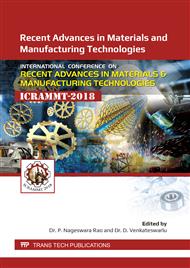p.502
p.508
p.517
p.524
p.530
p.539
p.546
p.552
p.558
Influence of Lung Channel Design Bipolar Plate on Performance of PEMFC Using Computational Fluid Dynamic Analysis
Abstract:
A 3-D computational model was developed to examine the proton exchange membrane fuel cell (PEMFC) performance using Lung channel design bipolar plate. The model was developed using ANSYS FLUENT-15.0 software and simulations were carried out at 100 % humidity conditions. The parameters such as pressure distribution, hydrogen and oxygen concentrations and proton conductivity were briefly presented. The simulation results of Lung channel are presented in the form of polarization curves. The results of a Lung channel compare with the conventional flow channel and observed that the Lung channel gives a less pressure drop, uniform distribution of reactants and high cell voltage at a particular current density. From the observation from the polarization data, the Lung channel performance was 17% higher than triple serpentine flow channel. Keywords: Humidity conditions, Simulation, Lung channel, Polarization curves, Current density.
Info:
Periodical:
Pages:
530-535
Citation:
Online since:
August 2019
Price:
Сopyright:
© 2019 Trans Tech Publications Ltd. All Rights Reserved
Share:
Citation:


